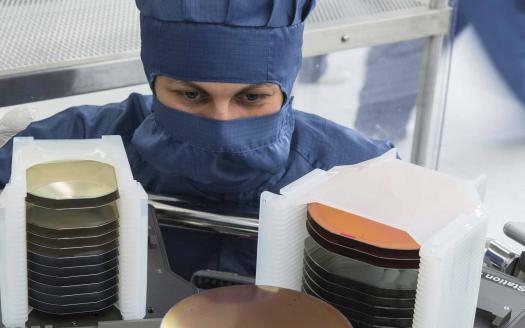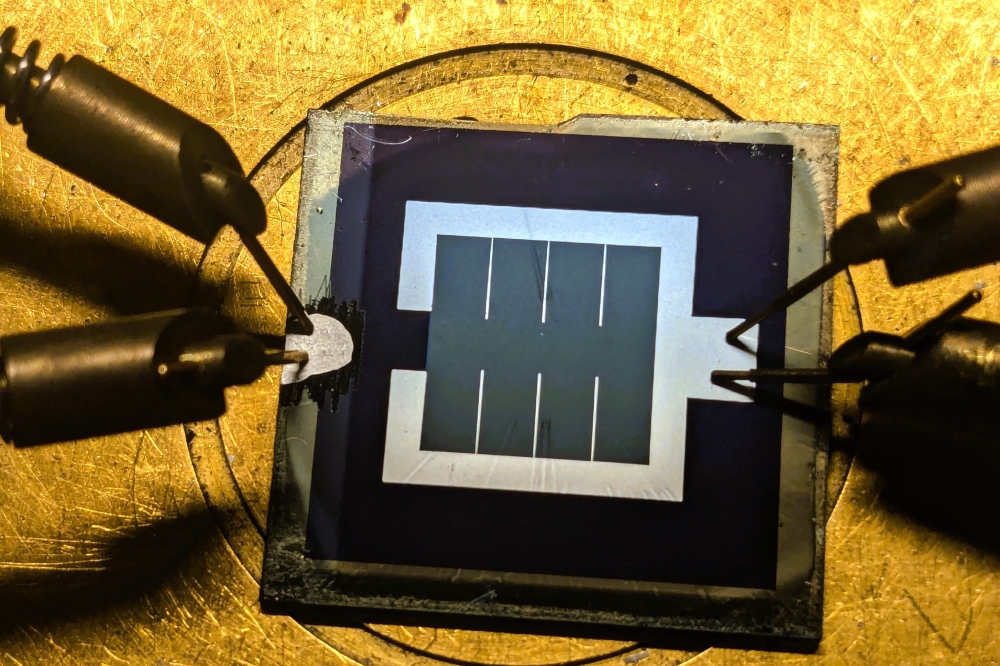All eyes on Osram

As Osram Opto Semiconductor unveils expansion plans, Compound Semiconductor talks to CEO, Aldo Kamper, about investment, industry domination, and more.
Will Osram's €1 billion investment in a new Malaysia LED fab bolster its position in general lighting market segments?
In the latest of a several moves to strengthen its position in the LED market, Osram is to spend a hefty €1 billion on building its largest fabrication plant to date, in Kulim, Malaysia.
A stone's throw away from its four inch InGaN-on-sapphire LED chip plant in Penang, this six inch LED production site could eventually churn out 20,000 six inch wafers every week for general lighting markets worldwide.
"We 're in the final stages of preparation and will start building the factory in March 2016," Osram Opto Semiconductor chief executive, Aldo Kamper, tells Compound Semiconductor magazine.
"We reckon it will take around a year to build the factory ready for equipment, and then come the fall of 2017, we will probably be ready for mass production," he adds.
Clearly Osram's weekly wafer quota won't hit 20,000 in 2017, but the latest investment indicates that the Germany-based LED and lighting supplier is very serious about its future position in the general lighting market.
Once open, the Kulim plant is set to be the world's largest six inch LED chip production site, and as Osram executives have repeatedly spelled out, it is intended to grow Osram's share in this market segment.
The Germany-based lighting manufacturer already has a strong presence in automotive and industrial lighting markets, but has steered away from general lighting market segments in the past.
However, with general lighting having the highest growth potential of all LED markets in the coming years, Osram wants in and Kulim can help to provide this.
"Surface-emitting LEDs are a big business for us and are extremely important for many optical systems, projectors and street lighting," highlights Kamper. "But we also have a very competitive volume-emitting chip, so can take a big step into the general lighting space."
"We're successful in automotive and industrial applications, but to continue growing we need a strong position in general lighting, as we are currently under-represented here," he adds. "Today we are number two [in the LED market] and we want to stay there."
Massive in Malaysia
So how exactly will the €1 billion be spent in Kulim? Kamper will not be drawn on the detail, simply stating a meaningful portion will be spent on the fabric of the factory, with the remainder allocated to chip processing equipment.
"The factory will be multiple times larger than Regensburg and multiple times larger than Penang. We plan to make this major expansion of our capacity over the next years," he says. "If you imagine how big the new fab is, then you'll see we will need several tens of reactors to fill it."
"Until now epitaxial manufacturing has purely taken place at our Regensburg plant in Germany; this will be the first time we will bring epitaxy to Malaysia," he adds.
Chip fabrication at Kumin will take place on six inch sapphire wafers, although the new reactors will be upgradable to eight inch wafer fabrication, if, as Kamper says, 'this becomes relevant one day'.
"We've worked in pre-development on eight inch wafers but given the cost and availability of eight inch substrates, this is not really a key topic for us over the next few years," he explains.
In a similar vein, production will remain firmly on sapphire, not silicon. According to Kamper, the difference in cost between a six inch silicon wafer and a six inch sapphire wafer has reduced significantly.
What's more, reaching the LED performance levels of a sapphire-based LED, on a silicon substrate, isn't easy.
"If you don't achieve the same efficiencies on silicon, then you have to [fabricate] bigger chips, which destroys the cost advantages of using silicon," says Kamper. "We continue to look at silicon and if there is a breakthrough we will use it, but we've done our homework and feel growing on sapphire is the more economical way to go."
And while industry pundits have hinted that Osram could be over-stretching itself with its latest investment spend, Kamper is quite clear on the company's strategy.
"It's the mix that needs to be right," he says, "We are financially very healthy and will continue to invest heavily in automotive and industrial businesses while accelerating the pace in general lighting."
"Playtime is over and with time we are going to see more and more separation amongst competitors, as it will be difficult for everyone to keep pace," he adds. "You have to think in large volumes in this industry if you want to be amongst the largest players."


































